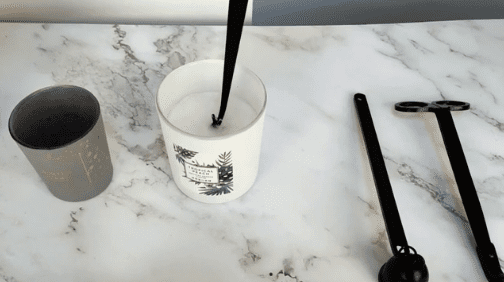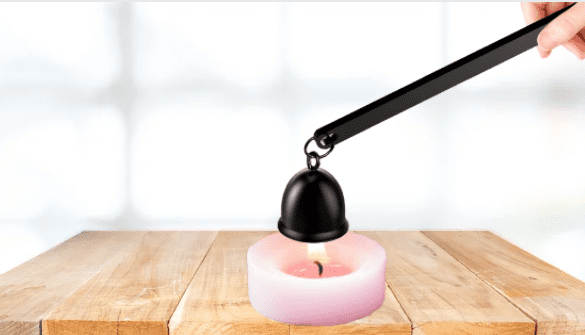How To Avoid Common Mistakes When Trimming Your Candles?
This article addresses common blunders people make when lighting candles. Are you a fan of candles? If the answer is yes, there’s a good probability that you’ve spent a lot of money on trimming candles. To make sure you are getting the most bang for your buck, read this article.
Because there is a chance that you might be doing something incorrectly even though you have been burning candles for a very long time.

Ask yourself these inquiries:
- Are you extinguishing your flame too quickly?
- When was the last time you cut the wick of your candle?
- Where do you typically store your burning candles?
- What specific method do you use to store your candles?
Mistakes You Are Making With Candle Burning
The seven most frequent errors that candle-burners make are listed below.
1. Not Leaving Your Candle’s Memory Behind It’s vital to get your first burn correct.
For all subsequent burns, the size of the wax pool during the initial burn sets the standard.
This is so that the wax won’t be further melted by consecutive burns than the first wax pool produced.
So how Does One Achieve a Successful First Burn?
- Always burn a new candle for 1 hour for 2.5 cm of its diameter.
- In this manner, the initial burn will last long enough to completely melt the wax on the candle’s edge.
- You will stay away from tunneling as a result. What is tunneling, exactly?
- Basically, it occurs when a candle burns hollow. In other words, the candle only melts through the center, maintaining the integrity of the wax around it.
It occurs when a candle burns hollow. In other words, the candle only melts through the center, maintaining the integrity of the wax around it.

2. Not trimming the candle’s wick
Your candle will release too much soot and the flame won’t be steady if your wick is too big.
On the other hand, a trimmed wick guarantees a continuous, calm flame.
What then is the ideal wick size?
3. Too Closely Placing The Candle Near The Draughts
To begin with, what are draughts? They are locations with excessive wind.
The flame will be disturbed if burning candles are placed in drafts or situations where there is an abundance of moving air.
These sites include those next to an open window and those next to the fan or air conditioner.
4. The Wrong Container Was Used
The container the candle is in has a big impact on its attractiveness. However, if the candle cannot fit in the container, this could be problematic.
The flame can begin smoldering and flickering. The container will bear black stains as a result.
5. Candles Placed Too Closely Together
This doesn’t seem like much of an issue to most people. because it seems aesthetically pleasing to group several candles. However, if these candles are lit, refrain from doing so.
When the candles are burning, be sure to maintain a gap of at least 3 inches.

6. Not Extinguishing Candles Properly
This is yet another unforeseen error that might occur when burning candles. The conventional method of putting out a candle is incorrect. Because doing so causes black ash particles to collect on your candle’s surface.
7. Not Properly Storing Your Candles
Always keep your candles in a cool, dark location. Additionally, make sure the candles’ lids are on to prevent dust and other debris from adhering to the surface of the candle. Putting a lid on top of them also preserves the candle’s smell and scent.
How Long Should a Candle Be Burned?
Make sure to burn it for 1 hour for every 2.5 cm in diameter if you’re burning it for the first time.
You will need to burn your candle for two hours if its diameter is 5 cm. Doing this is crucial since failing to do so will lead to tunneling.
Why are the wicks trimmed?
The wax next to the wick melts when you light a candle because of the heat from the flame. By means of capillary action, this liquid wax is drawn up the wick. The liquid wax is turned into hot gas by the flame’s heat, which also begins to break down the hydrocarbons into molecules of hydrogen and carbon.

How are the wicks trimmed?
There are a few considerations you should make while trimming the wicks on your candles. First, be certain to trim the wick only during cold weather. You run the danger of getting burned if you try trimming the wick while the candle is lighting.
Why is trimming wicks important?
You are aware that the flame is pulled to the wick if you have ever lit a candle. The wick gradually disappears due to heat from burning wax, and eventually, there is nothing left to burn. The wicks of your candles should be trimmed before each usage because of this.
By trimming the wick, you may regulate the flame’s size and avoid soot accumulation on the candle jar’s sides. Who wouldn’t want their candles to burn longer with this benefit? Therefore, before using the lighter again, take a moment to trim the wick. You’ll get thanks from your candles.
How often should the wicks of candles be trimmed?
If you enjoy the ambiance that candles can produce in any setting, you are aware that there is nothing quite like it. But did you know that regular wick trimming can enhance the performance of your candles? Just a few advantages of keeping those wicks trimmed are as follows:
- Wicks that have been trimmed burn more evenly and emit less soot.
- Longer-lasting candles have well-trimmed wicks.
- Your candles’ ability to throw aroma farther can be enhanced by trimming your wicks.
- The lifespan of your candles can be increased by routinely cutting their wicks.
- So how frequently should those wicks be trimmed? In general, it’s a good idea to do this each time your candle is lit.

Conclusion:
It is necessary to regularly trim the wick, ideally after each candle use. You can do this by using a toenail clipper, wick trimmer, scissors, or your fingers. As the candle melts down, a wick trimmer will become more useful.
However, you can begin with scissors. To guarantee that the candles burn steadily and brilliantly, the wick should be cut back by one-fourth inch. To increase the lifespan of candles, never leave them burning for longer than four hours at a time.






